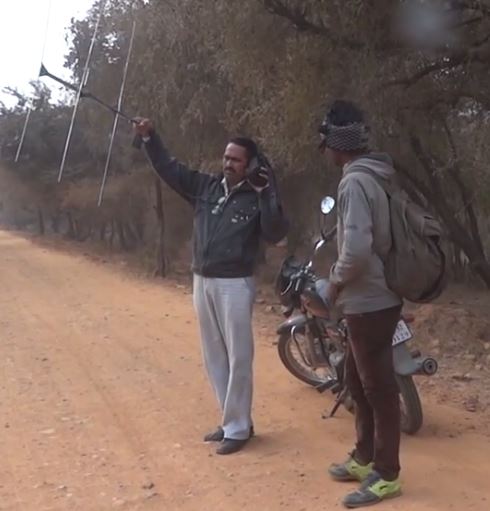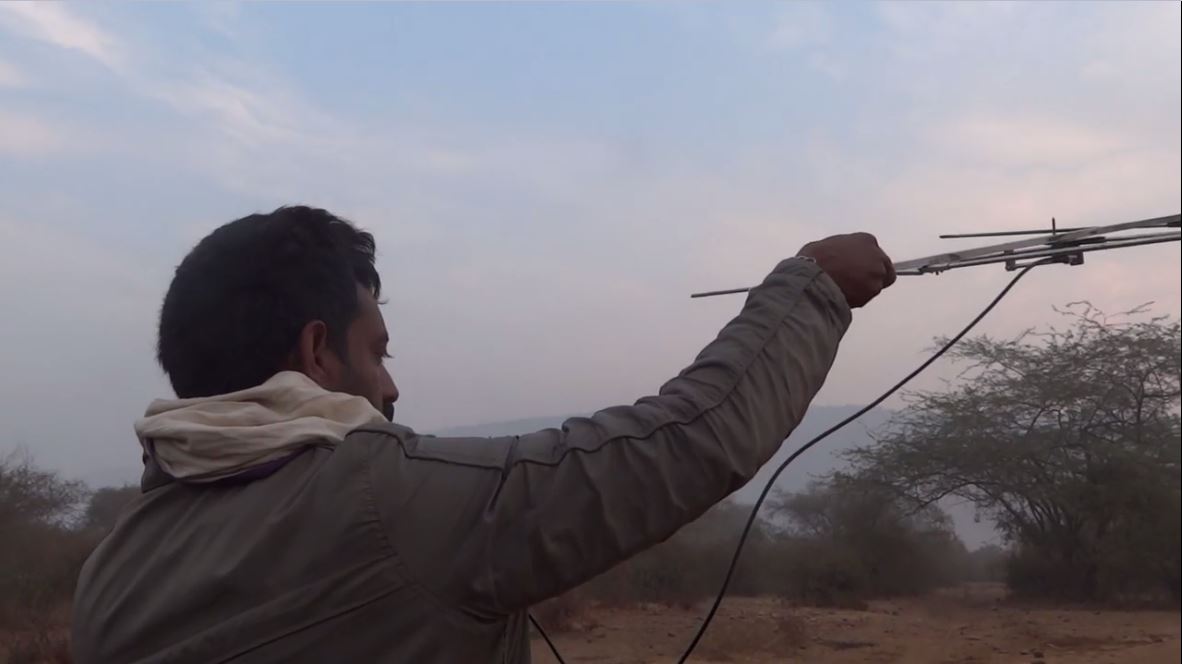Clean chit to wild-life intervention
A controversy about adverse effects of methods used by conservationists has been settled, says S.Ananthanarayanan
The last half century has seen global awareness of biodiversity that the earth has lost to the growth of industry. This has brought in laws where industry needs to be responsible towards the environment, and worldwide efforts to revive the wild-life that
remains. In 1992, however, an authority on wild-life conservation arrived at a conclusion that some methods of conservation, since 1964, may be the unwitting reason for extinction of some dwindling species.
Craig R. Jackson, Emmanuel H. Masenga, Ernest E. Mjingo, Andrew B. Davies, Frode Fossøy, Robert D. Fyumagwa, Eivin Røskaf and Roel F. May, of the Norwegian Institute for Nature Research, the Norwegian University of Science and Technology, Tanzania Wildlife
Research Institute and the Carnegie Institution for Science, at Stanford, and the, describe in the journal, Ecology and Evolution, their study that enables ecologists to take an informed view about this disturbing notion.

Radio collared tigers in Sariska being tracked
The question was first raised by Roger Burrows, of the University of Exter, UK, in a letter to the journal, Nature, in September 1992. Burrows referred to rising incidence, in Serengeti National Park, Tanzania, and adjoining conservation areas in Tanzania
and Kenya, of death of whole packs of Lycaon pictus, or the wild dog. Burrows noted that wild dogs, which were among the most endangered of carnivores in Africa, were also the subject of much study and research. Research involved immobilizing the animals
and fitting them with radio collars. And some animals were vaccinated against rabies. Burrows noted that in 1989, a whole Kenyan pack had died from rabies, a disease not a disease not usual with African wild dogs. The dogs that died, Burrows said, included
some that had been handled by researchers for radio collaring and for vaccination against rabies. And between 1985 and 1990 in the two conservation areas, four of eight packs, though not vaccinated, died within two to five months after radio collaring. And
it was known that one pack had died of rabies.
As rabies was feared, seven other packs that were being studied were then vaccinated against rabies, using air-pressurised darts. All these seven packs, Burrows said, died or disappeared within a year of vaccination. Although there was no evidence of rabies
in the area, rabies was suspected. And then, packs that had not been vaccinated, and not fitted with radio collars, had not been affected. This pointed a finger to either radio collaring or to vaccination. The need for vaccination itself was not clear, as
there was evidence that the packs had been exposed to rabies and some individuals had significant levels of rabies anti-bodies.
Burrows again noted that the stress of immobilising and ‘handling’ leads to raising levels of cortisol, a substance that suppresses the immune mechanism. And he proposed that it may have been the stress of handling which led to reduced immunity. Some
latent rabies viruses thus got reactivated and came to the surface, Burrows said.
The suggestion was widely contested, and two letters in the same journal, Nature, from the department of zoology of Oxford University, promptly questioned the conclusions and cited evidence to the contrary. One of the letters regretted that “the debate
has been fermented by inadequacy of data of the fates handled lycaon of the ecosystem” and made a plea for more study. “…but the conservation of this marvelous species in an ecosystem it has helped make famous deserves the highest standards of scientific
application,” the letter said.
Roger Burrows and those who agreed with him, however strongly defended what has come to be known as ‘Burrow’s hypothesis’. A paper by Burrows in 2011 strongly indicts conservation intervention, saying , “14 packs ….died or disappeared from two study areas
in the Serengeti-Mara ecosystem of Tanzania and Kenya, in East Africa, where the species had been considered a 'flagship species' for conservation. …The ecosystem population did not become extinct in 1991 a non study population persisted within and around
the ecosystem throughout the study period and persists to date….All study packs were the subject of conservation research by scientists who routinely used invasive research techniques (known as ‘handling’)……”
The paper also strongly attacked the arguments of opponents, often citing the reason of the data for contradiction being inadequate. As a result, was the question stayed undecided the value and the safety of research methods was called in question and
in many administrations, the practice of immobilization, the radio collar and immunization was stopped.
Serengeti ecosystem covers 30,000 square kilometers in Tanzania, has rivers, forests, wooded mounds, grasslands and is home to seventy mammal and five hundred bird species. And then to large numbers of lions, leopards, spotted hyenas and panthers. The
seasonal migration of, 260,000 zebra, 1.7 million wildebeest, 470,000 gazelles and hundreds of thousands of other game, following grazing plains, through the reserve, into Kenya in the north, is surely the largest known, in parallel with long distance migration
of humpback whales and in numbers, with the migration of birds or insects, and bats. The mass movement of grazing animals is a bonanza for carnivores and large numbers of the animals never reach their destination, including hordes that fall to crocodiles
during the crossing of rivers.
Development of Serengeti as a major biodiversity and wild-life ecosystem has led to sophistication in the methods of observation, census taking and management of resources or topography. An important technique is the placing of camera traps, which captures
animal movement, unobtrusively, and with automation, over months together, enabling huge data collection. In this context of massive data collection, the group writing in Ecology and Evolution decided that if it was lack of data that was in the way of deciding
the truth of the Burrow’s hypothesis, then it was time to collect the data needed.
The group saw that while the wild dog population had disappeared inside Serengeti National Park, the animal was not extinct and there were packs that lived in ranges just outside the National Park. To assess the hypothesis that ‘handling’, by way of immobilization
and fitting of radio collars, would reactivate latent rabies viruses, the group collected data of wild dog immobilizations carried out in the park since 1991. Data was collected of 121 immobilisations between 2006 and 2016, using the same method of air-pressure-driven
darts, and the welfare of the 121 wild dogs in the next three, six and twelve months was monitored. To allow for the objection that a single immobilization was a ‘short term’ stress, six packs of wild dogs were immobilized, between 2012 and 2016, in the adjoining
Loliondo Game Controlled Area . The animals were then captured, loaded in crates, transported, confined and released in the unfamiliar setting in Serengeti. This, in comparison with immobilisation fitting the collar, was severe stress, and according to the
Burrow’s hypothesis, should have resulted in increased mortality. The survival in the group of wild dogs that had been handled and relocated was compared with that of a similar group that had been exposed to ‘short term’ stress of only handling, without relocation.

Radio telemetry being used to track tigers translocated from Ranthambhore
Of the 121 animals relocated, it was found that 95.9% survived for three months, 91.7% for six months and 87.6% for a year or more. This certainly did not suggest that severe stress could cause reactivation of rabies viruses or other causes of mortality.
In fact, it had been seen that in six packs that had been handled and translocated to Sernegeti, the survival rate for a year, 95.5%,was greater than, that, 77.8%, of animals that had been handled but not translocated. Another significant fact noted was that
while numbers of wild dogs increased around the Serengeti park, creating pressure for new packs to seek territory, camera trap records showed that there was no recolonisation of Serengeti.
The evidence thus shows that handling, for fitting radio collars, which enables monitoring of numbers and movement of animals, do not compromise their safety. “Consequently, in the case of the African wild dog, information gained through research involving
radio telemetry and other interventions has most likely contributed to the conservation of the species as a whole, rather than compromised it,” the paper says.
[the writer can be contacted at response@simplescience.in]